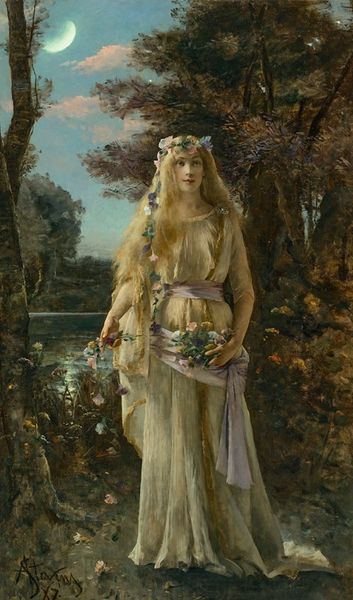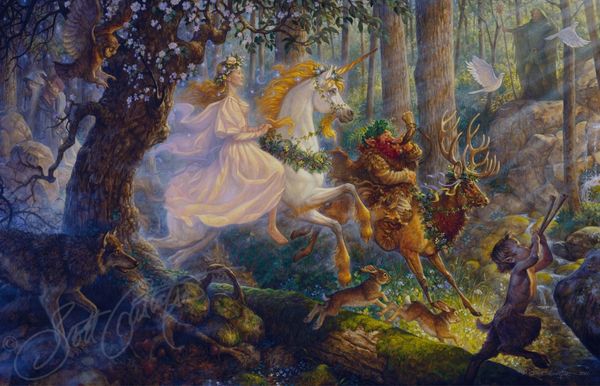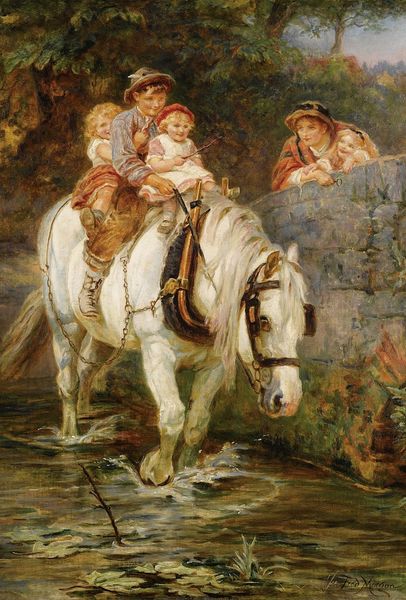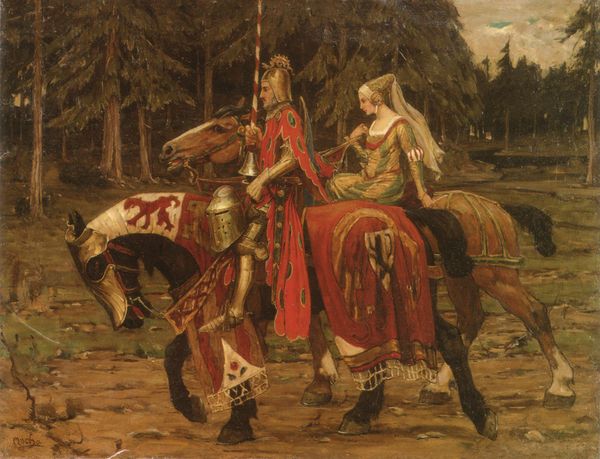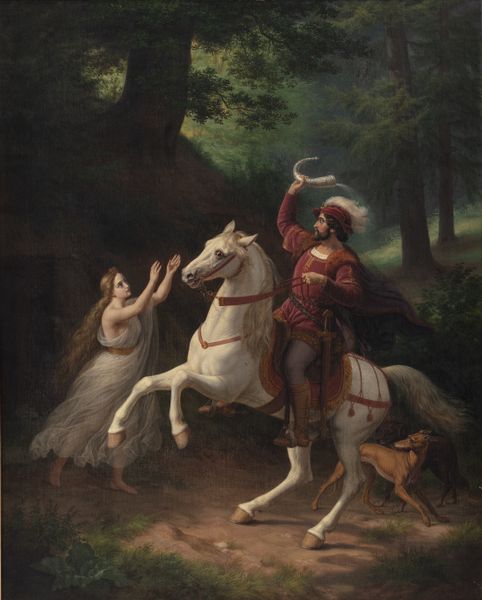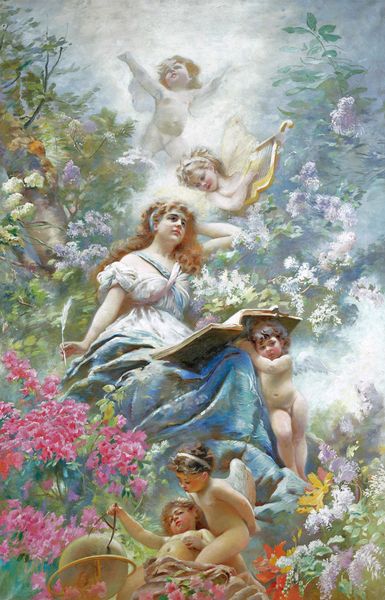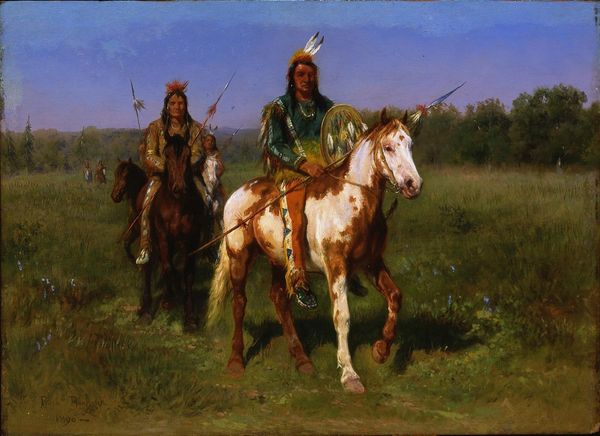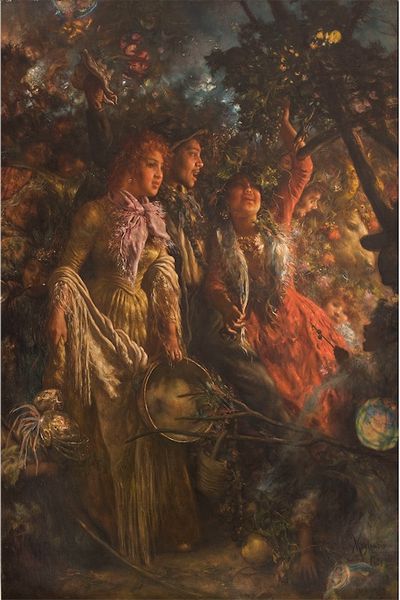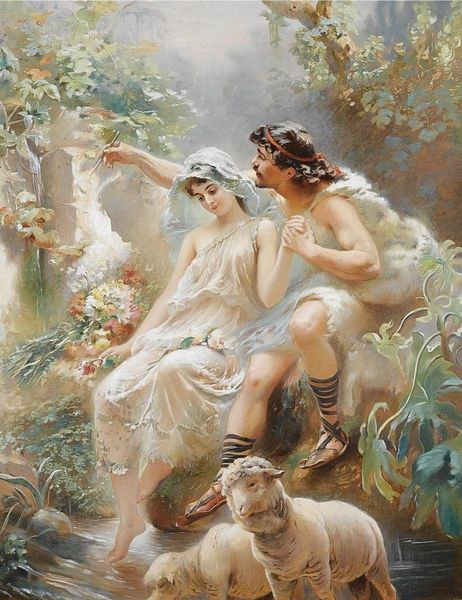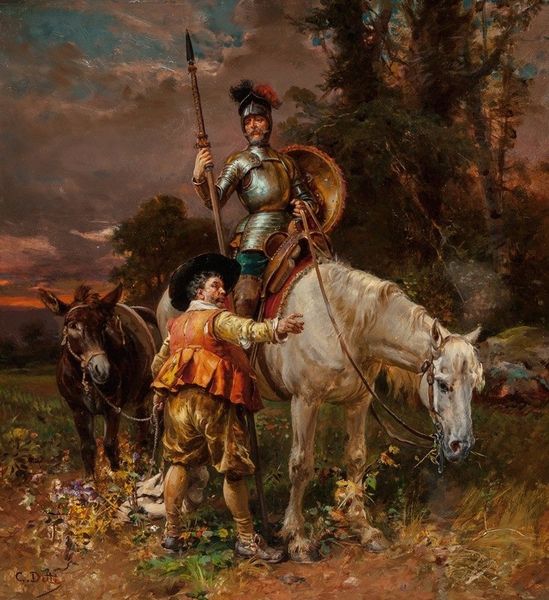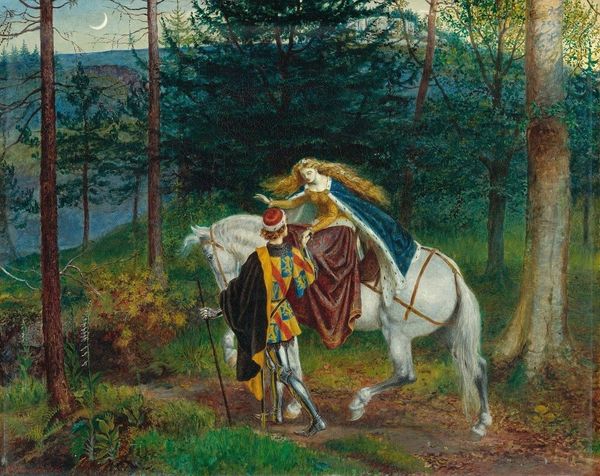
Copyright: Public domain
John Collier painted Queen Guinevere's Maying, an oil on canvas, likely around the turn of the century. The painting teems with symbols deeply rooted in the celebration of spring and renewal. Guinevere, framed by hawthorn branches bursting with white blossoms, embodies the spirit of May Day. These floral boughs, emblems of fertility and purification, echo pagan rites of old, reminiscent of the Floralia festivals of ancient Rome. The procession itself—a visual echo of ancient processional rituals—suggests a collective yearning for rebirth and communal harmony. The very act of "Maying"—gathering flowers and greenery—is a gesture reaching back to pre-Christian beliefs, where nature's awakening was greeted with ecstatic celebrations. Note how the figures around Guinevere are adorned with garlands and verdant hues, a nod to these ancient roots. Such images remind us that human psychology is swayed by the symbolic power of gestures and motifs. The cyclical dance of seasons, eternally renewing, finds its echo in these recurring symbols of May. They persist, shape-shifting across epochs, and resurface, laden with the weight of accumulated cultural memory.
Comments
No comments
Be the first to comment and join the conversation on the ultimate creative platform.

